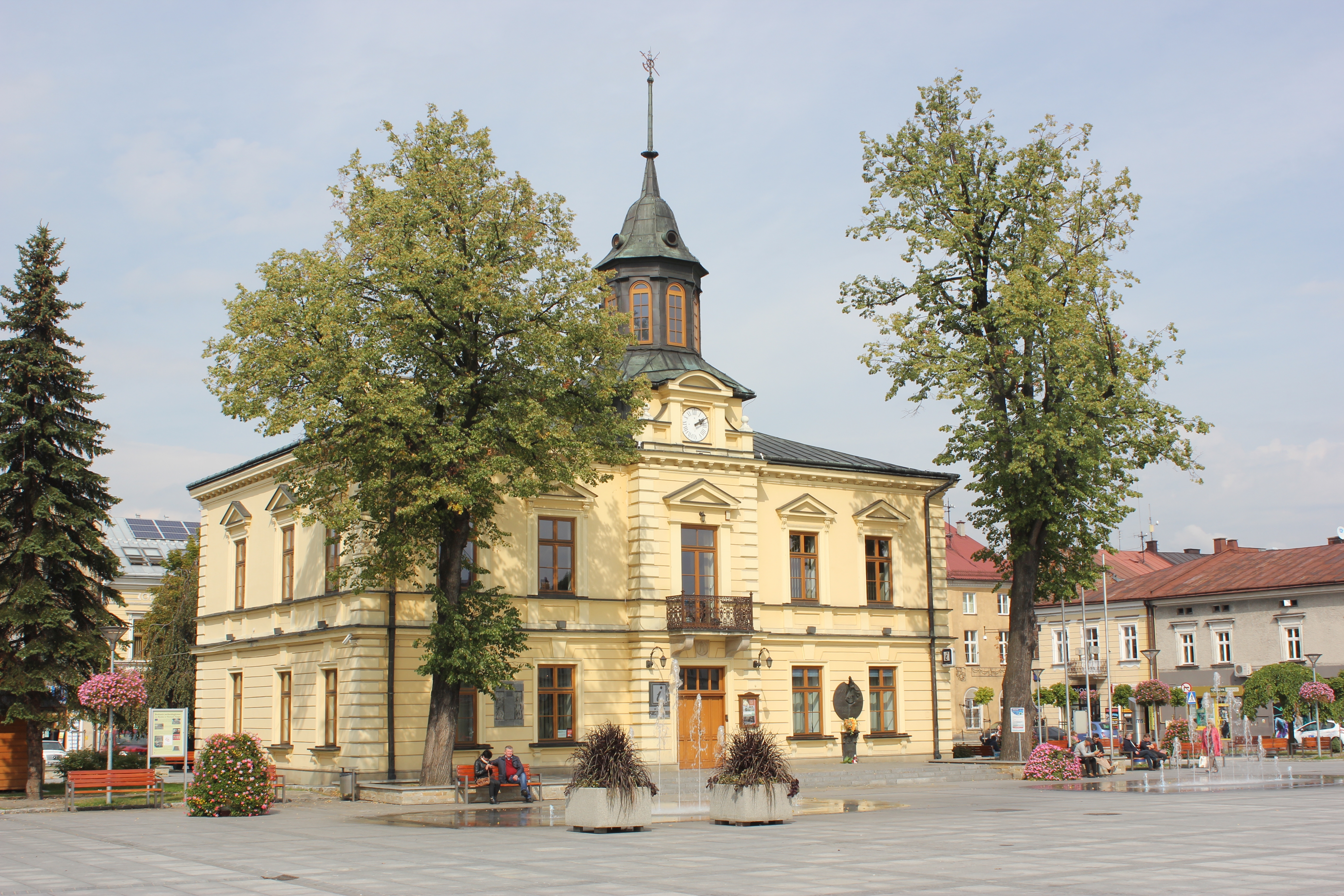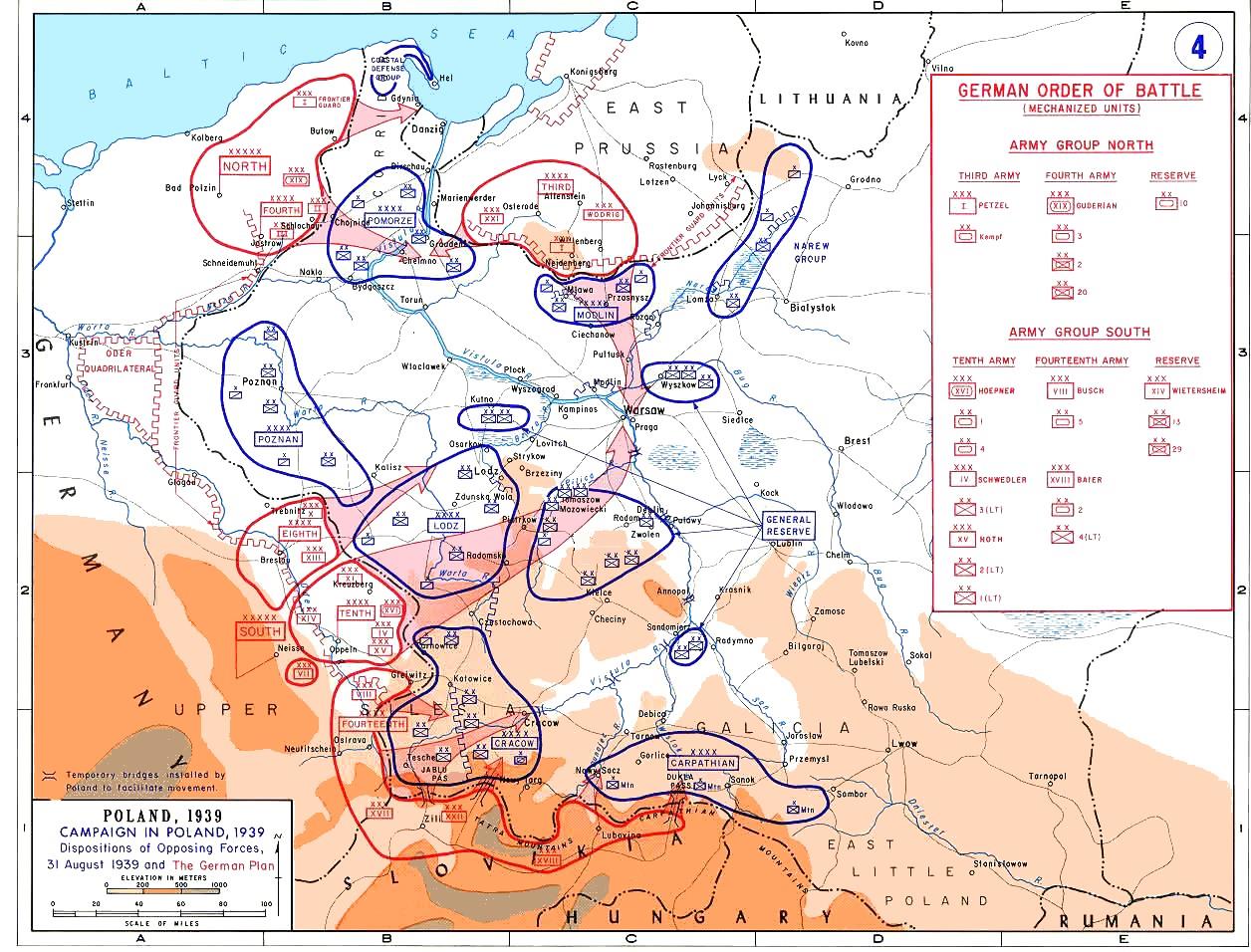|
Battle Of Jordanów
The Battle of Jordanów took place on 1–3 September 1939, during the Invasion of Poland and the opening stages of World War II. It was fought between the German XVIII Panzer Corps of Gen.E.Beyer and the Polish 10th Motorized Cavalry Brigade under Col. Stanisław Maczek. Opening hostilities ] On 1 September 1939, the XVIII Panzer Corps, part of the German 14th Army (Wehrmacht), 14th Army, crossed the Polish border from Slovakia. In an attempt to outflank the positions of the Polish Kraków Army under Gen. Antoni Szylling defending Silesia and western Lesser Poland, the Germans crossed the Tatra passes and assaulted the towns of Chabówka and Nowy Targ. Their orders were to seize the town of Myślenice not later than on 3 September thus encircling the entire Polish army fighting in the area. Opposing forces The area assaulted by the XVIII Corps was only lightly defended by a single infantry regiment of the Border Defence Corps under Lt.Col. Jan Wójcik. Hard pre ... [...More Info...] [...Related Items...] OR: [Wikipedia] [Google] [Baidu] |
XXXXVIII Panzer Corps
XXXXVIII Panzer Corps (also: XXXXVIII Army Corp or XXXXVIII. Armeekorps), was a corps-level formation of the German Army which saw extensive action on both the Eastern and Western Fronts during World War II. History The corps was originally formed on 15 December 1940 in Germany. At the dawn of Operation Barbarossa, on 22 June 1941, the Corps was attached to Field Marshal Ewald von Kleist's Panzer Group 1, a part of Army Group South. The corps took part in the Battle of Brody early in the campaign, and later saw action at Berdichev and Kirovograd. As did all German Corps on the Eastern Front, the XLVIII Motorized Corps implemented the criminal Commissar Order. From late 1941 to May 1942, the corps took part in defensive operations in the Kursk area. It was renamed the XLVIII Panzer Corps in early summer 1942. Thereafter the corps joined the Fall Blau offensive towards Stalingrad under Army Group B. During the Battle of Stalingrad the 29th Motorized Infantry Division (tr ... [...More Info...] [...Related Items...] OR: [Wikipedia] [Google] [Baidu] |
Border Defence Corps
The Border Protection Corps () was a military formation of the Second Polish Republic that was created in 1924 to defend the country's eastern borders against armed Soviet incursions and local bandits. Other borders were under the jurisdiction of a separate, regular Border Guard state security agency. Though the corps was part of the Polish Army, it was commanded directly by the Ministry of Internal Affairs rather than the Ministry of Military Affairs. It consisted of elite soldiers from all parts of Poland. Initially ''KOP'' comprised 6 brigades and 5 regiments, each guarding part of the borders with the Soviet Union. ''KOP'' ceased to exist with the fall of Poland in September 1939. In 1940, some of its former officers formed an underground armed resistance organization fighting against the German occupiers, the Komenda Obrońców Polski. History Founding After the Polish–Soviet War, the Polish eastern frontier was stretched from the border with Latvia to the north, t ... [...More Info...] [...Related Items...] OR: [Wikipedia] [Google] [Baidu] |
Myślenice
Myślenice is a town in southern Poland situated in the Lesser Poland Voivodeship, 30 km south of Kraków. The town is divided into six districts. The most popular of them, Zarabie, is a famous tourist destination. It is located behind the Raba (Vistula), Raba river (Zarabie meaning "Beyond the (River) Raba"), next to Chełm district on the slope of the hill of the same name, where is a view tower and a landscape park and ski lifts. Myślenice is a city located in the tectonic window area, between the Dalin, Chełm and Uklejna hills. The city is also located on the border of two Beskids (in the south) and the foothills (in the north). From the western bank of the Raba River these are Maków Beskids and Wieliczka Foothills while on the eastern bank of the river - Island Beskids and Wiśnicz Foothills. Myślenice has a direct and very convenient bus connection with Kraków however there is no train station in the city. History First mentions of Myślenice come from the year ... [...More Info...] [...Related Items...] OR: [Wikipedia] [Google] [Baidu] |
Nowy Targ
Nowy Targ (Officially: ''Royal Free city of Nowy Targ'', Yiddish: ''Naymark'', Gorals, Goral dialect: ''Nowy Torg'' ) is a town in southern Poland, in the Lesser Poland Voivodeship. It is located in the Orava-Nowy Targ Basin at the foot of the Gorce Mountains, at the confluence of the Czarny Dunajec (river), Czarny Dunajec and the Biały Dunajec (river), Biały Dunajec. It is the seat of the Nowy Targ County and the rural Gmina Nowy Targ, as well as the Tatra Euroregion. With 33,293 inhabitants, Nowy Targ is the largest town and the historic capital of Podhale, as well as its main commercial, communication and industrial center. The town has the Podhale State Vocational University in Nowy Targ, Podhale State Vocational University and the Nowy Targ Airport, highest located airport in Poland. Established before 1233, Nowy Targ received city rights on 22 June 1346 from King Casimir III the Great, Casimir the Great. The historic architectural and urban complex of the town with a Mar ... [...More Info...] [...Related Items...] OR: [Wikipedia] [Google] [Baidu] |
Chabówka
Chabówka is a village located on the outskirts of the southern Poland, Polish town of Rabka-Zdrój, Rabka, in the Nowy Targ County, Lesser Poland Voivodeship. With population of 1,600 (as for 2006), Chabówka is a popular tourist attraction because of its location near the Gorce Mountains featuring Gorce National Park. It also is an important rail junction, situated along the main line from Kraków to Zakopane, with another connection, to Nowy Sącz, beginning in Chabówka. Near the rail station there is a railway museum, with many examples of Polish-operated locomotives and rail cars. Chabówka shares its name with the northern Slovakia, Slovak village and municipality of Habovka in the Žilina Region. This is because the first settlers of Habovka came from the Poland, Polish village of Chabówka, which lent the new settlement its name. References {{Gmina Rabka-Zdrój Villages in Nowy Targ County ... [...More Info...] [...Related Items...] OR: [Wikipedia] [Google] [Baidu] |
Lesser Poland
Lesser Poland, often known by its Polish name ''Małopolska'' (; ), is a historical region situated in southern and south-eastern Poland. Its capital and largest city is Kraków. Throughout centuries, Lesser Poland developed a separate culture featuring diverse architecture, folk costumes, dances, cuisine, traditions and a rare Lesser Polish dialect. The region is rich in historical landmarks, monuments, castles, natural scenery and UNESCO World Heritage Sites. The region should not be confused with the modern Lesser Poland Voivodeship, which covers only the southwestern part of Lesser Poland. Historical Lesser Poland was much larger than the current voivodeship that bears its name. It reached from Bielsko-Biała in the southwest as far as to Siedlce in the northeast. It consisted of the three voivodeships of Kraków, Sandomierz and Lublin. It comprised almost 60,000 km2 in area; today's population in this area is about 9,000,000 inhabitants. Its landscape is mai ... [...More Info...] [...Related Items...] OR: [Wikipedia] [Google] [Baidu] |
Silesia
Silesia (see names #Etymology, below) is a historical region of Central Europe that lies mostly within Poland, with small parts in the Czech Silesia, Czech Republic and Germany. Its area is approximately , and the population is estimated at 8,000,000. Silesia is split into two main subregions, Lower Silesia in the west and Upper Silesia in the east. Silesia’s culture reflects its complex history and diverse influences, blending Polish, Czech, and German elements. The region is known for its distinctive Silesian language (still spoken by a minority in Upper Silesia), richly decorated folk National costumes of Poland, costumes, hearty regional Silesian cuisine, cuisine, and a mix of Gothic, Baroque, and industrial-era Silesian architecture, architecture seen in its cities and towns. The largest city of the region is Wrocław. Silesia is situated along the Oder River, with the Sudeten Mountains extending across the southern border. The region contains many historical landmarks ... [...More Info...] [...Related Items...] OR: [Wikipedia] [Google] [Baidu] |
Antoni Szylling
Antoni Szylling (31 August 1884 – 17 June 1971) was a Polish general, considered, along with Generals Wiktor Thommée and Stanisław Maczek, to have been one of the most successful Polish Armed Forces commanders during the Invasion of Poland of 1939. Biography Antoni Szyling was born in Płoniawy-Bramura. He finished a 7-year trade school in 1904 and from an early age was an active member of the Polish pro-independence nationalist paramilitary organization the Combat Organization of the Polish Socialist Party. He had several safehouses, in which he stored ''bibuła'' and arms, as well as hiding wanted PPS members and members of other organizations. Arrested by the authorities of the Russian Empire, he served several one-and-a-half-month sentences in the Warsaw Citadel and Daniłłiczowski Prison. He was also denied the right to study at a university and was conscripted into the Russian Army for two years (1905–1907). In 1910, he married Zofia Bajkowski (1887–1944). In the ye ... [...More Info...] [...Related Items...] OR: [Wikipedia] [Google] [Baidu] |
Kraków Army
Kraków Army () was one of the List of Polish armies, Polish armies which took part in the Invasion of Poland (1939), Polish Defensive War of 1939. It was officially created on March 23, 1939 as the main pivot of Polish defence. It was commanded by Gen. Antoni Szylling. Originally, Kraków Army was to be made of seven infantry divisions, two cavalry brigades and one mountain brigade. On September 1, 1939, General Szylling had the force which consisted of five infantry divisions, two cavalry brigades and one brigade of mountain infantry. Altogether, the army was made of 59 battalions, 29 squadrons, 352 cannons, 90 tanks, two armoured trains and 44 planes. These forces were not enough to halt German advance, especially in the area north of Częstochowa, where Kraków Army connected with Łódź Army. Main thrust of Wehrmacht panzer units was directed there, and this area was defended only by the Polish 7th I.D., which was destroyed in the early days of September 1939, opening the way t ... [...More Info...] [...Related Items...] OR: [Wikipedia] [Google] [Baidu] |
Slovakia
Slovakia, officially the Slovak Republic, is a landlocked country in Central Europe. It is bordered by Poland to the north, Ukraine to the east, Hungary to the south, Austria to the west, and the Czech Republic to the northwest. Slovakia's mostly mountainous territory spans about , hosting a population exceeding 5.4 million. The capital and largest city is Bratislava, while the second largest city is Košice. The Slavs arrived in the territory of the present-day Slovakia in the 5th and 6th centuries. From the late 6th century, parts of modern Slovakia were incorporated into the Pannonian Avars, Avar Khaghanate. In the 7th century, the Slavs played a significant role in the creation of Samo's Empire. When the Avar Khaghanate dissolved in the 9th century, the Slavs established the Principality of Nitra before it was annexed by the Great Moravia, Principality of Moravia, which later became Great Moravia. When Great Moravia fell in the 10th century, the territory was integrated i ... [...More Info...] [...Related Items...] OR: [Wikipedia] [Google] [Baidu] |





